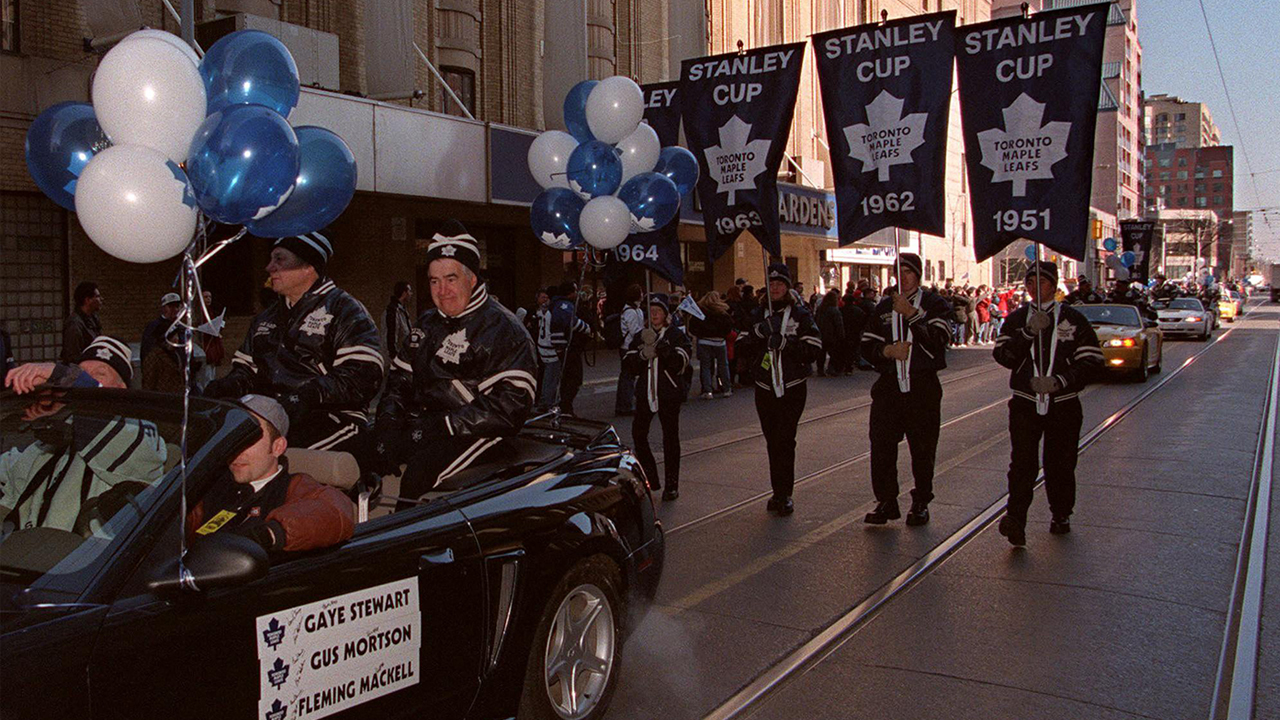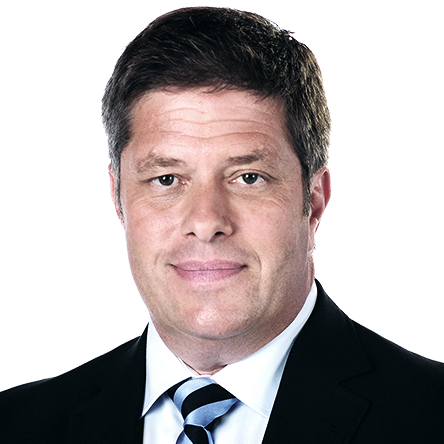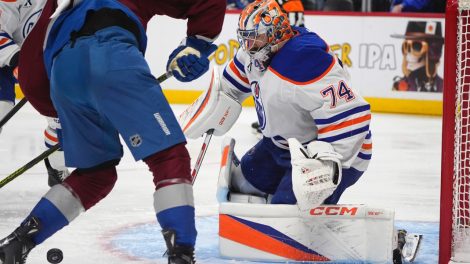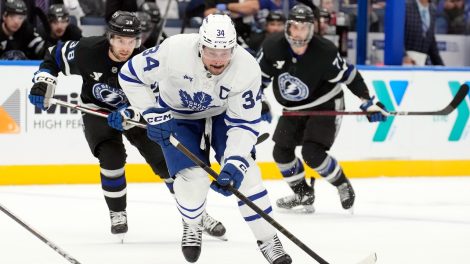Does the expression “they are planning the parade route” get mentioned as often or resonate as much in any other North American city beyond Toronto? I’m not sure if it is the same here as it is in every other city with pro sports teams.
Initiated in many ways by the 51-year drought (and likely counting) for Toronto Maple Leaf fans, it remains the elusive pot of gold for the team that has not made it even to a Stanley Cup final, never mind a Stanley Cup victory, since the last parade in 1967.
That expression is likely made by Leafs fans to vent frustration, but it’s also a consistent barb of sarcasm from fans of opposing NHL teams who enjoy the opportunity to express derision towards the loyal, passionate and large fan base that is Leafs Nation.
So what exactly is this “parade route” that is so often referenced? Well, obviously, there will likely have to be some changes to what appeared to work well in four Stanley Cup parades during the 1960s. The Leafs did have a City Hall rally in 1993 for a team that fell one game short of making it to the final. So desperate was Leafs ownership and Leafs fans for the slightest form of success that they feted that team like Stanley Cup champions and doled out commemorative rings for the “Norris Division Champions of 1993”, a title that doesn’t even really exist.
[snippet id=3918715]
So how did the Leafs and the City of Toronto celebrate back when they actually won the Stanley Cup?
It was a somewhat chilly afternoon on May 5, 1967 when the Stanley Cup parade commenced to celebrate Toronto’s Stanley Cup victory three days earlier in six games against the Montreal Canadiens. Though the Canadiens have won more Stanley Cups than any other NHL team, the Leafs likely rained on what could have been the greatest Stanley Cup parade in the City of Montreal’s history, as they had extravagant plans to see the parade end in Expo ‘67, a very successful World’s Fair the city hosted that year.
After recent Stanley Cup parades in Toronto had evolved into a bit of a repetitive, old hat feeling with three consecutive ones from 1962 to 1964, this one had more of a positive vibe of excitement and appreciation after the slight absence of NHL championships. Toronto schools let students out for the afternoon so they could attend.
The parade followed the usual route that began at Maple Leaf Gardens at the corner of Church and Carlton Streets. It then headed south on Church Street, west on Wellington Street and then back north on Bay Street to the reception at Toronto City Hall. The largest throng of fans and well wishers were at that final stretch on Bay Street.
The Toronto Police likely had all their horses on duty as they led the parade, followed by the 48th Highlanders bagpipe regiment that have had a long history with the Toronto Maple Leafs. Then it was a simple line of convertibles with generic small flags to indicate who was in that particular car. The first car included Leaf captain George Armstrong and his father along with Leaf president Stafford Smythe and vice-president Harold Ballard.
Unlike the previous three Stanley Cup parades, this was the first to conclude at the New Toronto City Hall, which opened Sept. 13, 1965. The venue was a better gathering place for the throng of spectators than the Old City Hall, which was a short walk away from the new architectural “masterpiece” or “eyesore” depending which side of that debate you supported.
This was the fourth Leaf Stanley Cup parade in seven years and they were greeted on behalf of the City of Toronto by a fourth different Mayor as well because civic elections were held every two years back then. Nathan Phillips was Mayor for the 1962 parade and Donald Summerville greeted the Leafs in 1963.
In November of 1963, Summerville died suddenly of a heart attack at the age of 48 while playing in a charity hockey game at George Bell Arena. Due to the lack of a central office handling Toronto ambulances at the time, Summerville was an unfortunate victim of administrative and operations blunders in dispatching an ambulance to deal with his emergency. It took more than 15 minutes for an out-of-area ambulance to make the run from Davenport and Yonge to George Bell Arena. A subsequent inquest after Summerville’s death resulted in an upgrade and improvement in trying to centralize and maximize efficiency for the various Toronto ambulance services.
[relatedlinks]
That meant another new Mayor, this time Phil Givens, greeted the Leafs for their third consecutive parade. In 1967, Mayor William Dennison was introduced to the crowd by legendary CTV broadcaster Johnny Esaw to give the official civic welcome to the Toronto Maple Leafs.
Mayor Dennison presented each of the Leafs with engraved watches on behalf of the city. They had previously received gifts of cuff links, a tie bar and unbelievably in 1964, silver cigarette cases, another indicator of what a different era it was. This time all the Leafs players and executives were asked to sign a special Centennial Guest Book at the New City Hall.
Not every Leafs player got new Stanley Cup rings, though, which of course is a whole other industry unto itself nowadays. If it was your first title, you received a ring. If you had won one of more before, which was the case for the majority of the team, you had a diamond added to your existing ring.
This time the players also received from ownership an all-events lifetime pass to Maple Leaf Gardens. As I found out years later in talking to many of the players, it ended up being a hollow gift as once one got in the arena there was no provision to sit anywhere.
Leafs veteran Bob Baun was a much-noted absence in 1967. He had been the playoff hero just three years earlier by scoring one of the most memorable goals in Leafs history, winning the Cup in overtime of Game 6 in Detroit when he returned to the ice after breaking his ankle. Baun played a limited role in the 1967 series and headed out of town to go fishing with his three sons on Parade Day to help ease the bitter taste he felt.
Goaltender Terry Sawchuk had (along with Johnny Bower) been among the playoff stars.
Sawchuk’s family had remained home in Michigan the entire season and throughout the playoffs and he had lived in a modest hotel room near Maple Leaf Gardens. For the Stanley Cup parade, however, his wife Pat and oldest son Gerry made the trek to Toronto. Pat was pulled over by the Ontario Provincial Police as she sped down Highway 401 East to join the celebration and was clocked going 85 miles per hour. When the officer returned to give her the ticket he asked “are you any relation to Terry Sawchuk?” She answered in the affirmative. “Well I am giving you this ticket because I am a Montreal Canadiens fan” said the unsympathetic officer.
[snippet id=3816507]
Sawchuk and Baun would be gone in the NHL Expansion Draft a month later as the NHL went from six to 12 NHL teams. The erosions and dismantling of the 1967 champions were swift and painful.
For many of the older players this was their one last roar, and a rather impressive one that that. The Leafs’ best line in the playoffs of Jim Pappin, Peter Stemkowski and Bob Pulford never played another single shift together. Pulford upset Leafs management by being the first player head of the NHL Players’ Association, which would be formed two months after their Stanley Cup victory.
The incredibly underrated Larry Hillman played the best hockey of his life and was the top Leafs defenceman throughout the playoffs. He would be involved in a bitter and long drawn out contract dispute the next season (he wanted $20,000 and Leafs general manager Punch Imlach wouldn’t budge from $19,500) and though one could admire Hillman’s principals, the holdout ultimately cost him money and his career as a Leaf was basically over.
And on and on it went.
So now in 2018, for the first time since 1967, maybe it is time to actually think about planning a parade route. They could actually just go straight north up Bay Street from their current home at the Air Canada Centre to Toronto City Hall. Or do they just stay at Maple Leaf Square? Whatever route they ultimately plan for, Leafs fans can now acknowledge the verbal barbs of “I guess they are planning the parade route” with not the usual half hearted sigh and/or smile, but with a confident nod.









